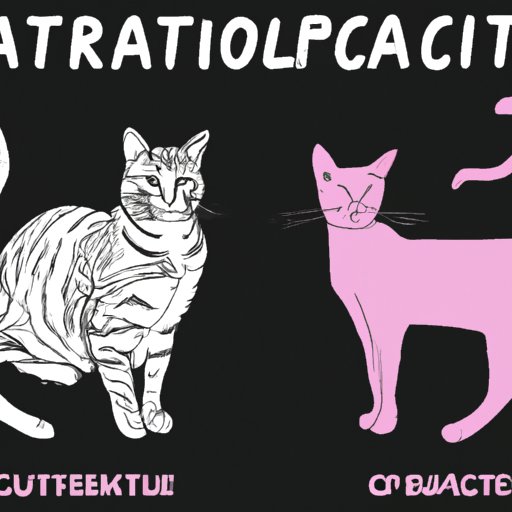
Introduction
Have you ever thought about what makes you unique? One answer to that question lies in your physical traits. Physical traits are characteristics that define your physical appearance, such as height, eye color, and facial features. They play a significant role not only in defining our individuality but also in shaping our lives. In this article, we will explore the science behind physical traits, their power, debate, and diversity.
Uncovering the Science Behind Physical Traits: Understanding What Makes You Unique
Physical traits are visible attributes that define an individual’s appearance. Height, hair, eye color, skin color, facial features, and body shape are some of the basic physical traits. These traits are present at birth and can be inherited from one or both parents. Physical traits can also develop during an individual’s lifetime due to environmental or external factors such as nutrition or exposure to radiation.
Our physical traits are influenced by our genes. The genes that control physical traits are passed down from parents to their children. However, whether a trait is expressed or not depends on its dominance or recessiveness. For example, if an individual receives genes for both brown and blue eyes from their parents, they will inherit one dominant gene that determines that they will have brown eyes.
The Power of Physical Traits: How Your Appearance Can Influence Your Life and Relationships
Physical traits, apart from defining our appearance, also have a psychological impact on our self-esteem and confidence. For example, people with height or weight issues often experience discrimination, which can lead to low self-esteem and confidence.
In addition, physical traits can affect the way people interact with us. For example, studies have shown that people with symmetrical faces are perceived to be more attractive, healthy, and intelligent.
Physical traits play a significant role in shaping our lives, career choices, and social status. For example, people who are tall are more likely to be hired for certain jobs such as modeling, while people who are shorter have other opportunities, such as gymnastics or jockey. Similarly, some physical traits are more prevalent in certain cultures than others, and they can play a role in increasing or decreasing one’s status within their culture.
Nature vs. Nurture: A Debate on the Role of Genetics in Determining Physical Traits
The debate surrounding whether nature or nurture plays a more significant role in determining physical traits has been ongoing for centuries. On one hand, nature advocates point to genetics as the primary determinant of physical traits. They argue that the genes an individual inherits from their parents determine their physical traits, such as height or eye color.
On the other hand, nurture advocates argue that environmental and external factors play a significant role in the development of physical traits. For example, an individual’s diet or exposure to radiation can cause physical traits to develop or mutate. In reality, both nature and nurture play a role in determining physical traits. Genes from parents provide the blueprint or framework for physical traits, but environmental factors can cause those traits to manifest differently.
The Significance of Physical Traits in Evolutionary Biology
Physical traits are also significant in the field of evolutionary biology. Natural selection and sexual selection play a crucial role in the evolution of physical traits. While natural selection determines which physical traits contribute to an individual’s survival, sexual selection determines which traits are more attractive to potential mates. For example, the peacock’s tail is considered a sexually selected trait, which adds to its aesthetic appeal and increases its chances of mating.
The evolution of physical traits can also be impacted by demographic factors such as migration or regional adaptation. For example, skin color varies depending on geographic location to better suit regional climates.
From Hair Color to Foot Size: Exploring the Variety of Physical Traits Across Different Populations
Physical traits across different populations can vary significantly. While some physical traits are universal, others are more prevalent in certain populations than others. For example, lighter hair and eye colors are more prevalent in populations of European descent, while darker skin tones are more prevalent in populations of African descent.
Physical trait variations can also have a cultural significance. For example, in Japan, a common cosmetic procedure is to surgically alter the appearance of the eyelid to appear more Western. Similarly, the practice of foot binding in China in previous centuries was used to enhance the appearance of small feet in women, which was considered aesthetically appealing.
Conclusion
Physical traits are a vital aspect of our individuality, and they play a significant role in defining who we are. Our physical traits are influenced by our genes and environmental factors, and they can impact various aspects of our lives, including our self-esteem, social status, and career choices. Understanding physical traits and their significance can help us appreciate and celebrate our unique qualities. By embracing our physical traits, we can learn to love ourselves and the things that make us unique.





